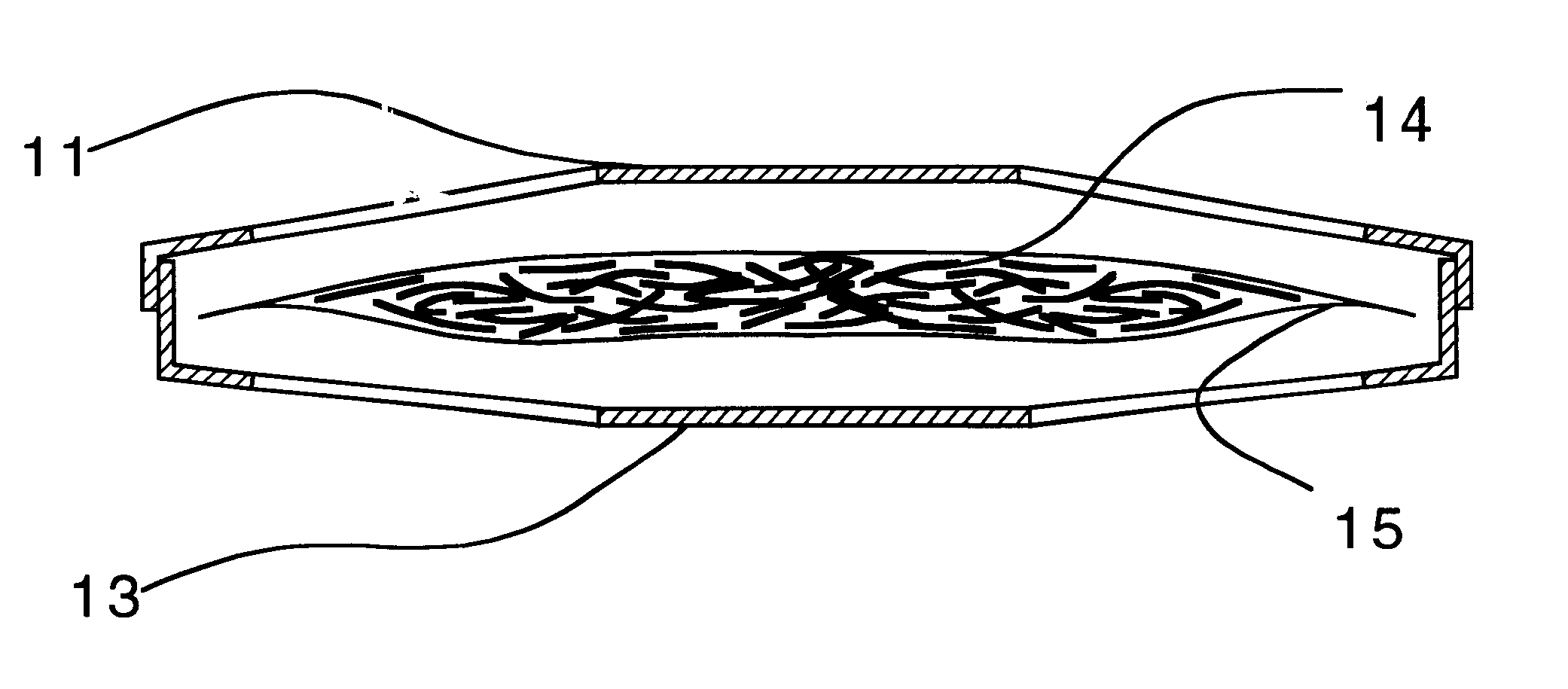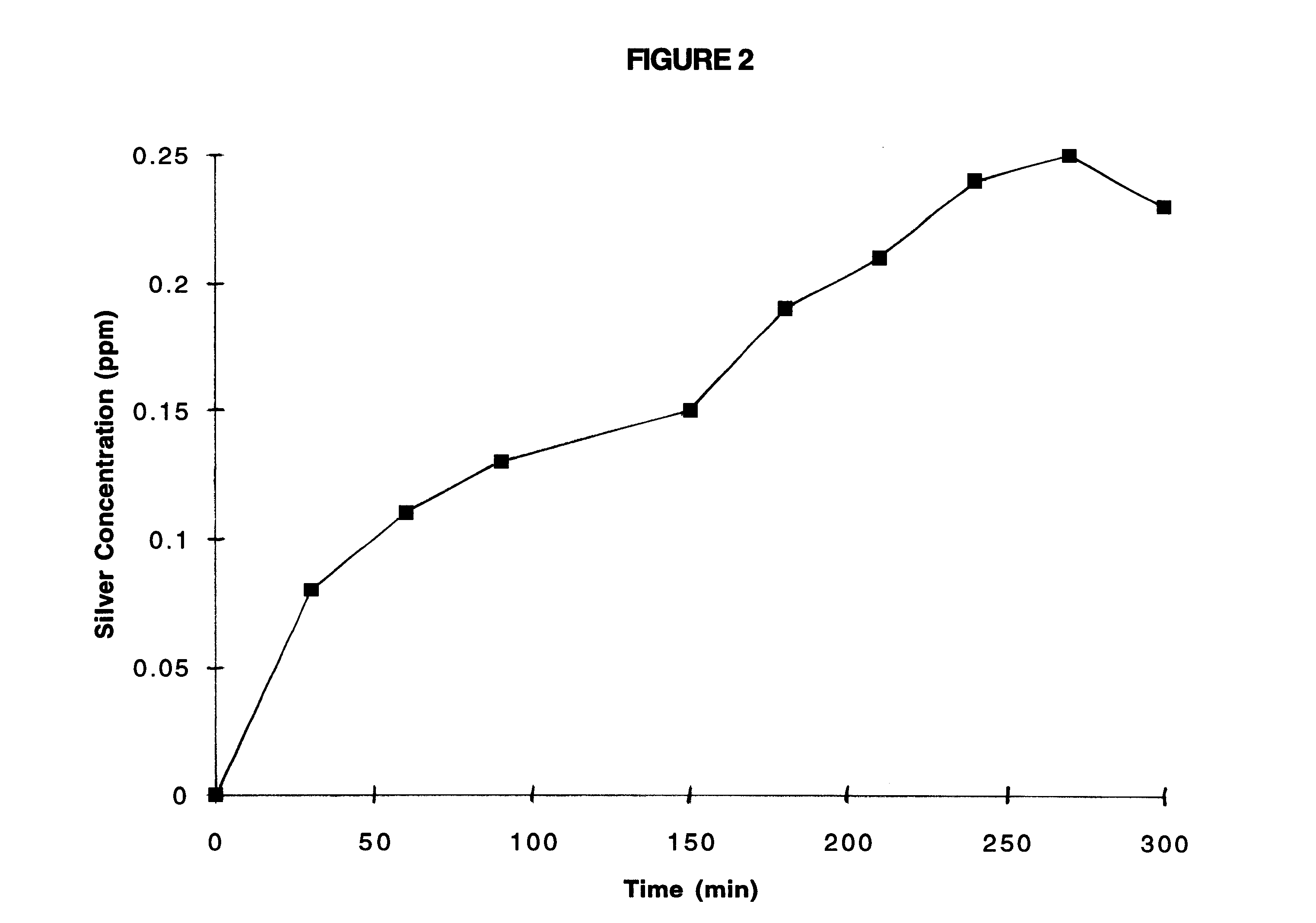Apparatus and method for purifying water with an immersed galvanic cell
- Summary
- Abstract
- Description
- Claims
- Application Information
AI Technical Summary
Benefits of technology
Problems solved by technology
Method used
Image
Examples
example two
A strip of 2.5 cm by 5.0 cm silver metal and a 2.5 cm by 5.0 cm strip of platinized niobium expanded mesh was immersed in 200 mls of DI water containing 5.25 ppm of sodium hypochlorite. The solution pH is 7.5. The silver and platinum strips were separated by 0.5 mm thick polypropylene mesh and were electrically connected via a volt / ampere meter. The solution was agitated with a magnetic stirrer. The potential was 0.47 V and the current was 0.066 mA. The solution was analyzed for silver every 30 minutes using an Atomic Absorption spectrometer. The results are shown in FIG. 2. The measured silver dissolution rate is 5% to 15% of the theoretical amount calculated from the measured current.
example three
A strip of 2.5 cm by 5.0 cm silver metal and a 2.5 cm by 5.0 cm strip of platinized niobium expanded mesh were immersed in 200 mls of DI water containing 5.25 ppm of sodium hypochlorite. The solution pH was 7.5. The silver and platinum strips were separated by 0.5 mm thick polypropylene mesh and were electrically connected via a volt / ampere meter. The solution was agitated with a magnetic stirrer. The stir bar rotation rate was varied and the corresponding current was recorded to determine the dependence of silver dissolution on the liquid shear rate. The results are shown in FIG. 3.
Now, turning in greater detail to the two embodiments of the invention depicted in the appended drawings, FIGS. 5a and 5b show one possible implementation of the current invention. A mixed packing of strips of platinized foil and silver foil (14) is retained in a polyethylene or nylon mesh pouch (15). The plastic pouch is contained in a hard case with top and bottom sections (11) and (13) respectively. B...
PUM
| Property | Measurement | Unit |
|---|---|---|
| Volume | aaaaa | aaaaa |
| Mesh size | aaaaa | aaaaa |
| Weight | aaaaa | aaaaa |
Abstract
Description
Claims
Application Information
 Login to View More
Login to View More - R&D
- Intellectual Property
- Life Sciences
- Materials
- Tech Scout
- Unparalleled Data Quality
- Higher Quality Content
- 60% Fewer Hallucinations
Browse by: Latest US Patents, China's latest patents, Technical Efficacy Thesaurus, Application Domain, Technology Topic, Popular Technical Reports.
© 2025 PatSnap. All rights reserved.Legal|Privacy policy|Modern Slavery Act Transparency Statement|Sitemap|About US| Contact US: help@patsnap.com



